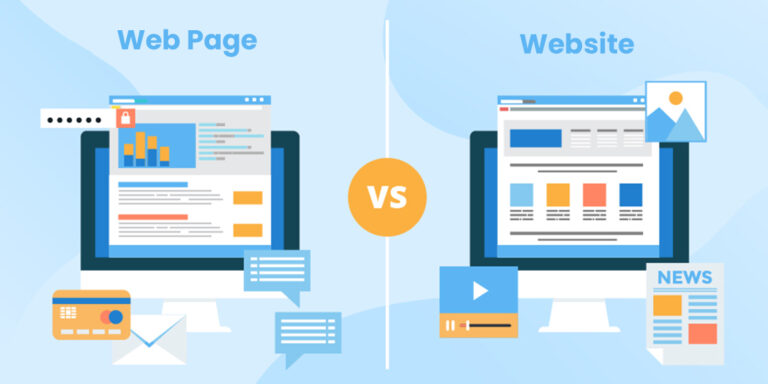
Table of Content
No one creates a website in a vacuum. They always have something to say and something to offer, both of which they can do via the site. The thing is that it’s all very well creating a whole website, if no-one uses the site.
The first trick is to attract visitors to your site, which is not necessarily difficult, as long as you use images and information that is relevant to the topic, or interesting on its own. The problem is how do you get them to stay beyond the average 15 seconds?
The answer is to know what users want and to give it to them. The only surefire way to achieve this is to find out exactly what potential users want. The best way to do this is to get them involved via user testing. When you have a better understanding of this, you can truly meet your users’ expectations and can strategize with the help of SEO.
What is User Testing?
Think about user testing as being like creating a new board game. You begin with a concept, make decisions about what the board will look like, what figures your players will use and how they will progress around the board.
How will you know if it’s successful, though? Will players understand what’s going on, or even enjoy playing?
The answer is to ask them, of course! Get a group of people, sit them down and let them play the game. It will soon become apparent if your design is successful. There are likely to be parts that need to be revised. You take the players’ feedback and make some changes – then repeat the whole process, until your game appeals to people who want to play it and get something out of it.
It’s the same with any types of websites you create. You can do everything you like in the design of the site – convince yourself that it will attract and suit users. How can you know without asking them, though?
Just as you’d test your board game, you need to test your website. Only, it’s much more useful to test it at each stage of creation.
User Testing Brings The Website Owner And User Together
User testing basically brings your website and your users together. It’s the moment when the aims and intentions of the design of your site overlap with what the user is looking for and what they expect to get.
Think about it this way: It’s as though you are reaching out a hand to the users and offering them something. They, in turn, are reaching out to you, looking for something. Only when you give them what they actually want will you be successful.
You need to let the users take what you have and examine it, use it, then tell you what they think. You can use this information to make changes to your offering and make sure it meets their expectations.
This is how user testing brings your website and your users together.
How Do You Conduct User Testing?
There are two basic types of user testing: remote or in-person. Both of them involve identifying a group of possible users and inviting them to visit your site.
There are two ways of assessing the user experience: through observation and via feedback.
Two factors drive the way you choose the group: they must be representative of the users you want to attract to your site; and they must be representative of a cross-section of that population.
The trick to conducting user testing is to give the test subjects the correct prompts and to be able to observe them as they navigate through and use your site.
You grant a specific group of users access to your website and give them some questions they’ll answer according to their experience of your site. Each user should access and interact with your website, preferably on more than one device. After doing so, they give feedback, which you can use to adjust your website.
How To Run A User Testing Session
A user testing session can be conducted in a controlled environment, or ‘out’ in the real world. The testing can be moderated or not.
You can run a ‘live’ user testing session in a controlled space. All the participants are given the same precise directions. While they are using the site, they are monitored and information is gathered.
A test can also be run remotely. The users visit and interact with the site using their own computers or mobile devices. Although the information about how they use the site may be quite realistic, it isn’t very detailed.
You can also do testing in a more real environment, outside of a testing lab. Their interactions are more authentic and can be monitored in person or virtually.
Like everything in tech, automation is a growing trend—and user testing in web design is no exception. As the need for fast, scalable feedback increases, many teams are turning to test automation tools to support usability and interface testing in both remote and real-world environments.
These tools help streamline repetitive testing tasks, collect consistent interaction data, and reduce manual observation efforts. For those looking to implement this kind of testing effectively, understanding the basics of automation testing is essential. It provides the foundation for selecting the right tools, building repeatable test flows, and analyzing user behavior with greater accuracy.
In a moderated test, whether it’s in a controlled or real space, the participants’ screens can be recorded. This gives useful information about how users navigate the site, what features they explore, and any obstacles they may encounter.
Another option is to target random people in a (relatively) public place and ask them about your site. This process isn’t moderated, but you’ll get immediate honest feedback.
Why Is User Testing Relevant During Web Design?
Designing a website is both a creative and practical process. You should make sure that your product or service is clearly presented to the user, with all the different aspects, processes and options easily available. The first step of any design process is that visitors should be attracted to your site. The next, logical step is that they should be encouraged to stay.
Making your website attractive is about the look, feel and design. You want the users to have a good experience of the content. Encouraging visitors to stay is about the functionality of the website, as well as the look and feel.
It’s all very well designing a website to suit you and your perception of possible users. There is no guarantee, though, that you’ll get it right. What happens if you’ve misjudged the users’ experience? It would be like shooting yourself in the foot. A website is not about what you think should be there, but what the users need and are looking for.
This is where user testing comes in. How can you know if your website caters to your users if you never ask them?
What Is The Greatest Value Of User Testing?
User testing will give you insight about your website in a few areas.
- You can test whether the first pass at the website is a solid base from which to further develop the site. It’s vital to have a solid base from which to work, so this is a very important moment at which to seek user feedback.
- You’ll be able to get a picture of any aspects of the design that don’t work. There may, for example, be a need to look for bugs in the system, or to be aware that navigation is not easy; or you may find out that the technical aspects don’t support what you are hoping to achieve.
- You can begin to develop a picture of how users to your site behave: what they click on; where their attention rests; and what patterns they may use during navigation around the site.
- You will gather insights from the users and their feedback about their experience that will tell you what works and doesn’t work, or what they may be looking for that isn’t there yet.
All of the user testing results are invaluable information to help you develop your site as you build it.
How Do You Get Feedback From Your Users?
The only way to get feedback from anyone is to ask them to give it. They may do so as a general statement, or they may do so in answer to prompt questions.
When you conduct user testing on your website, it’s important to ask the most appropriate questions for the feedback you are looking for.
The questions you ask should relate to the different phases of testing:
- Questions you ask of possible subjects as you screen them for the purpose of testing your site.
- Questions the subjects will answer before they begin using the site.
- Questions that are relevant during the testing of the site.
- Questions that they will answer when they’ve finished on the site.
When Should You Conduct User Testing?
The optimal way to make use of user testing is at every stage of development of the site. This will ensure you get the best possible feedback as you design and execute each stage.
Begin at the Beginning
You should begin by testing the concept for your site. It’s all very well coming up with an idea for a website, but what happens if it won’t work? Or if it isn’t going to attract any users?
When you’ve begun to develop the site, you will end up with a prototype – the first version of the site. Testing this version will help you understand what aspects you should continue to develop and what you should move away from.
If you conduct user testing very early in the design process, you’ll be able to ensure the site will have a solid base from which it can develop.
It’s like building a house for someone: if the foundations are not solid, the house is very likely not to offer the owners what they expect it to. They will then look elsewhere. If, however, you ask them what they think of the foundations, it will help you make sure they create a solid base for the house they expect to meet their expectations.
Test At Every Stage
As you go along, it’s important to test and retest if you can. You may not think it’s worth it to apply user testing to every iteration of the site, but it will be in the long run. You don’t want to end up with a completed site and find that something you could have easily changed along the way just isn’t working for the user.
For example, users interact well with visual elements of a website, such as pictures, photographs and graphics. They should be of high quality, so you will attract and keep the users. If, however, the images are not working for the users, you’ll need to change them.
Don’t Forget That Final Test
When you’ve arrived at the final version of your site, you should conduct one more test. Perhaps, rather than identifying possible users of your site, you could choose possible visitors. This will show you if people who just visit your site are likely to be able to use it successfully and may become users.
Test, Test and Test
The long and short answers to the question of when to test is as often as possible.
The Importance of User Testing
User testing is a web design trend that allows you to keep track of the way users behave when they interact with your site. This information will be a guide of what to do to make the users’ experience better and more tailored to what they are looking for.
During the process of designing a website, you can get users to test your site, then you can analyze the results, and tweak the design to fit the feedback and so the site is more usable.
This process can be repeated a number of times, each of which will produce an improved design – until you arrive at a final version, which can be launched.
Think about it as though you’re a baker trying out a new recipe for blueberry muffins. You bake the muffins, then ask some of your regular customers to taste them and tell you what they think. According to the feedback, you adjust the recipe, so that the muffins are more appealing to your customers.
When your friends have told you what they think of the new muffin, you will need to decide if that is the recipe to choose. It’s only through the continuous feedback from your customers that you’ll finally arrive at the best muffin for them.
The Role of User Testing in Web Design
The whole point of designing and launching a website is for people to use. This should place the users right at the forefront of the whole process. User testing allows the users to speak back to you and to show you what it is they are looking for. If you then work this into the development process, you’ll produce a website that is designed with the user in mind.

Logopoppin
Logopoppin is a graphic design agency that specializes in logo designing, web development, video production and advanced branding services. We love to innovate businesses with new age technologies, allowing them to improve their visual reputation.



